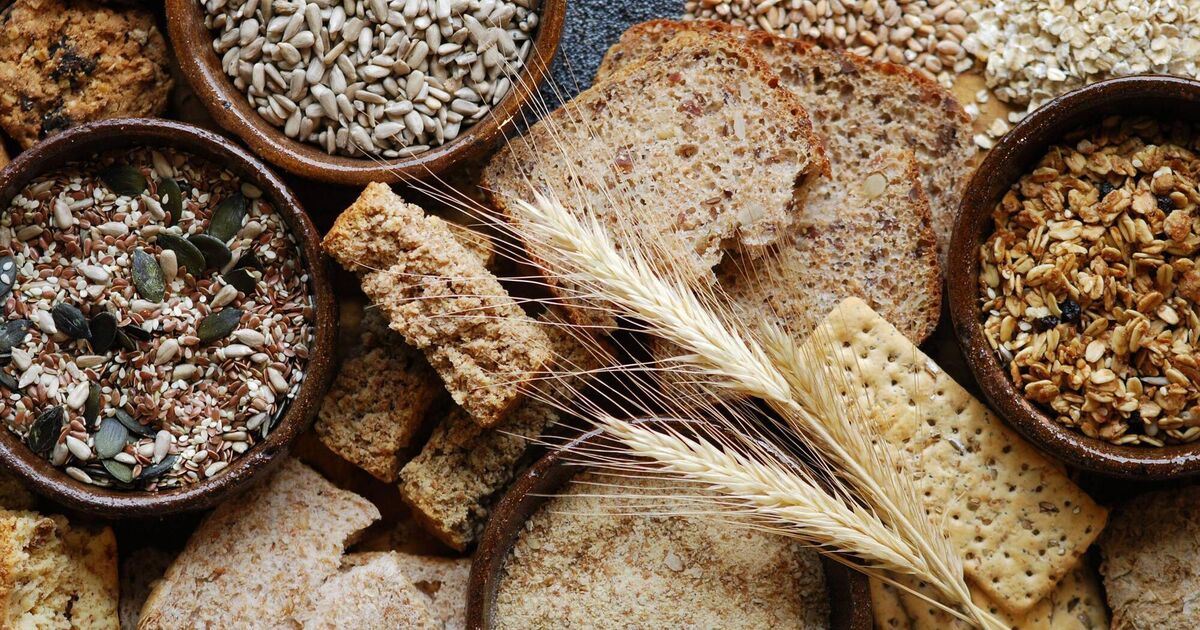EVERY month, a new superfood bursts onto my feed — promising eternal youth, glowing skin, and sunrise yoga energy, all from some obscure seed, berry, or root.
You know the drill: Goji berries, acai bowls, sea moss, and ingredients that could clog a Henry vacuum.
But there’s one trend that’s actually a strategy and not a food — fibremaxxing.
Fibremaxxing is when people — usually TikTokers and Instagrammers in lovely soft lighting — start loading their diets with extreme levels of fibre to “hack” their gut health.
Instead of gradually improving your diet like a sensible adult, fibremaxxing is all about going from zero to porridge in 60 seconds.
We’re talking about psyllium husk smoothies, chia seed puddings, flax crackers, chickpea pasta, lentil wraps, and powders with names like “IntestiBloom Cleanse+” that cost €37 and smell like compost bins.
The idea is to ramp up both soluble fibre, which slows digestion and stabilises blood sugar, and insoluble fibre, which bulks out your stool and keeps things moving, so your gut microbiome can supposedly flourish.
If you’re lucky, it might mean more energy, better digestion, and fewer mood swings. If not, it means wondering how to tell your boss you can’t come in because your insides are staging a protest.
My first brush with this trend happened before it had a name. We were sent a hamper of chia seeds while I was doing breakfast radio.
I found a bag that claimed to have been used by Aztec warriors, and thought: “That’ll do.”
I poured about 200g into a water bottle, swished it around, and drank the lot. Lottie Ryan tried to stop me. She failed. My intestines did not.
For the next week, my body had the fibre intake of a herd of elephants. And that, dear reader, is where this fibre odyssey began.
There’s something suspicious about how quickly we crown new health royalty.
One month it’s turmeric, the next it’s charcoal — which, by the way, is just burnt toast with notions.
Fibre, however, is the Beyoncé of nutrition. It’s been here the whole time — just not getting the spotlight.
Fibremaxxing took that and ran with it, turning an old friend into a full-blown TikTok icon.
The trouble is, social media wellness trends come with style but not safety warnings.
People down fibre powders like they’re protein shakes. It’s the PR machine that’s the problem. Gut health sounds gentle and nourishing.
But what they don’t tell you is if you go from zero fibre to max fibre in one day, you’ll hear noises from your stomach that resemble a battle scene from Game of Thrones.
Superfoods are great, but they’re not miracle workers, and they don’t deserve to be trusted more than your own intestines.
Chia seeds are the gateway drug to fibremaxxing.
They’re everywhere — sprinkled into smoothies, yoghurts, overnight puddings, and in every second influencer’s “gut-friendly brekkie bowl”.
They’re small, flavourless, packed with omega-3s, and they expand into a weird jelly substance when wet — like frogspawn with a marketing budget.
The Aztecs believed they were sacred. I believed I was invincible. I was wrong.
Now I treat chia seeds with respect. Two teaspoons into yoghurt, leave them overnight in the fridge — lovely.
You can’t just cram your body full of lentils and expect your life to remain unchanged.
Fibre moves things, quickly, and not always at a time of your choosing.
One of the key mistakes in fibremaxxing is timing. Social media makes it look effortless — they add a ‘gut shot’ to their morning routine, as if it were toothpaste.
But if you try that without a carefully planned schedule and access to your own toilet, you’re dicing with danger.
Fibremaxxing should come with calendar alerts: “Do not attempt if you have: A funeral, a Zoom presentation, the school run, or a three-hour GAA match.”
Fibre respects no one’s plans and it certainly doesn’t care about the NCT queue.
This is the bit nobody warns you about: Once the fibre hits, your bathroom habits become a matter of personal triumph.
Not in an emotional sense, but in the way you feel you’ve achieved something the world should know about.
You study your work. You analyse it. You develop opinions. Gross, yes, but here we are. And don’t shoot the messenger.
But like all wellness trends, it’s not the food that’s the problem.
It’s the all-or-nothing mindset that leads people to drink three tablespoons of psyllium husk and then film themselves crying in a kimono.
Start slow. Listen to your gut — literally. Remember: If your new routine requires a map of Ireland, it might not be sustainable.
Fibre doesn’t need to be fancy, it just needs to work. And trust me — when it does, you’ll know.
